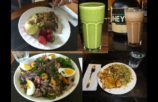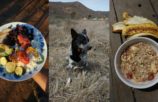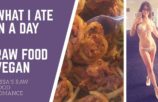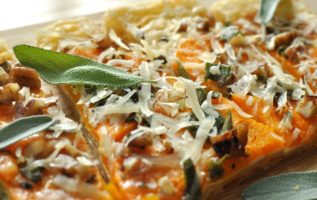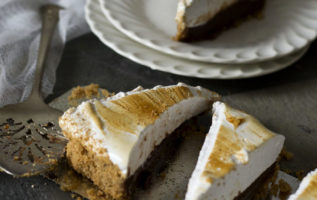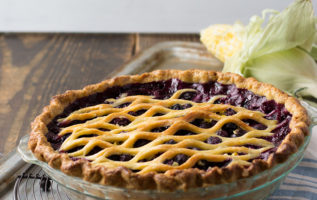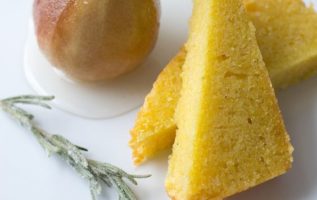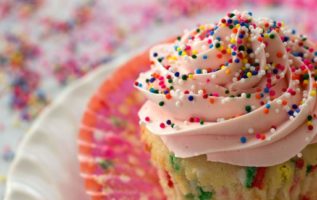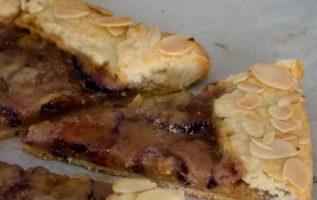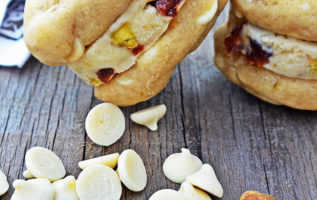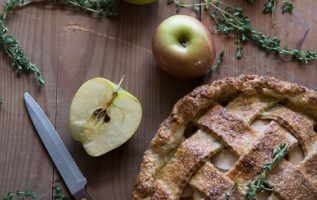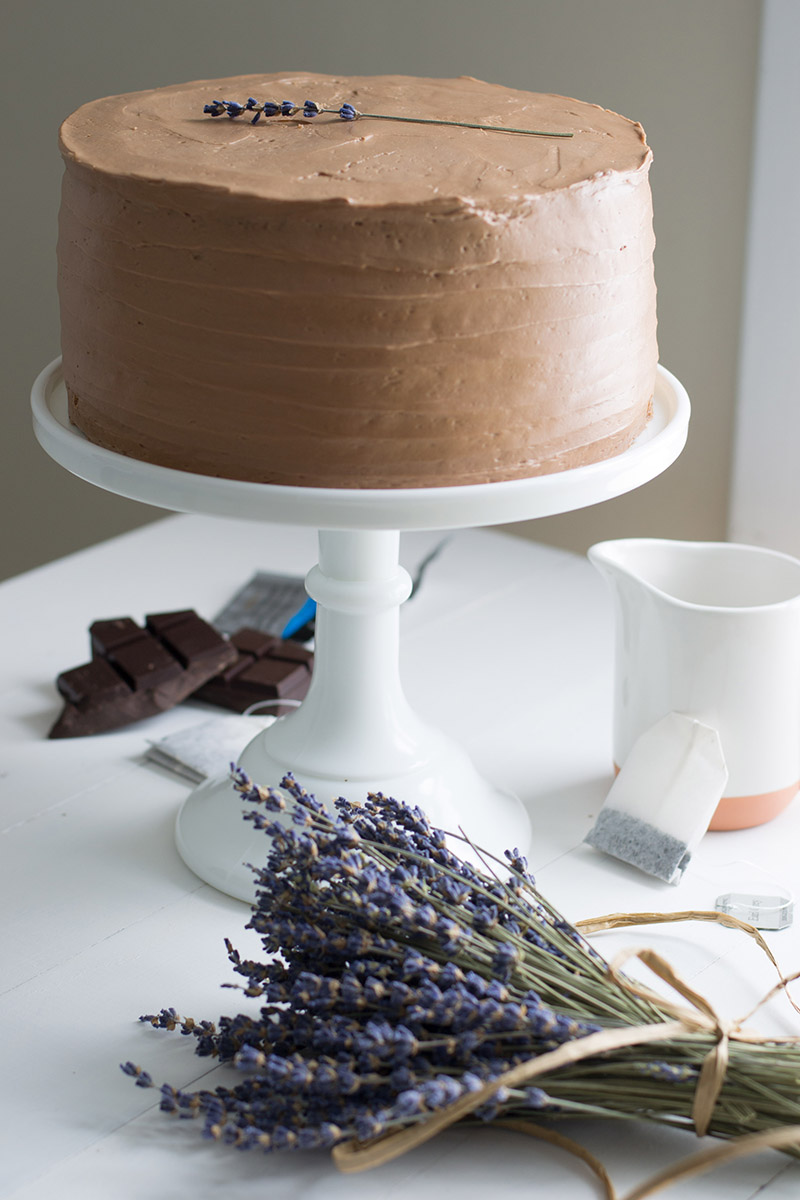
I’m pretty lucky to have mostly friends who are obsessed with food as much as I am. I side-eye anyone who doesn’t want to try every food at least once and not-so-secretly scoff at dietary restrictions unless someone shows me a doctor’s note. One of my favorite people to bake for is my friend, Dani, because she not only has no restrictions, but she also has adventurous tastes.
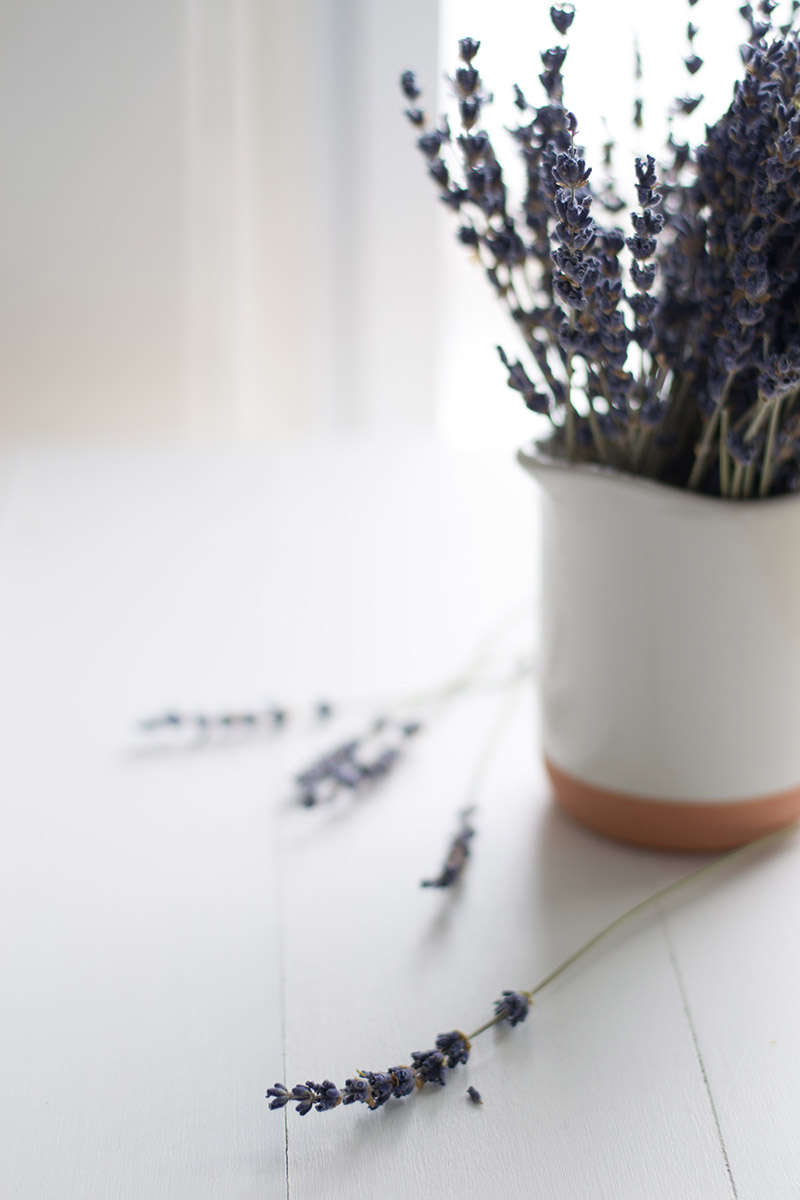
Dani loves eating flower- and tea-flavored things even more than I do, which I didn’t think was possible before we met. I attribute our mutual love of floral desserts to the fact that our birthdays are only a day apart. It must be some cosmic joke played on December babies that we crave the very thing that is dead when our birthdays fall.
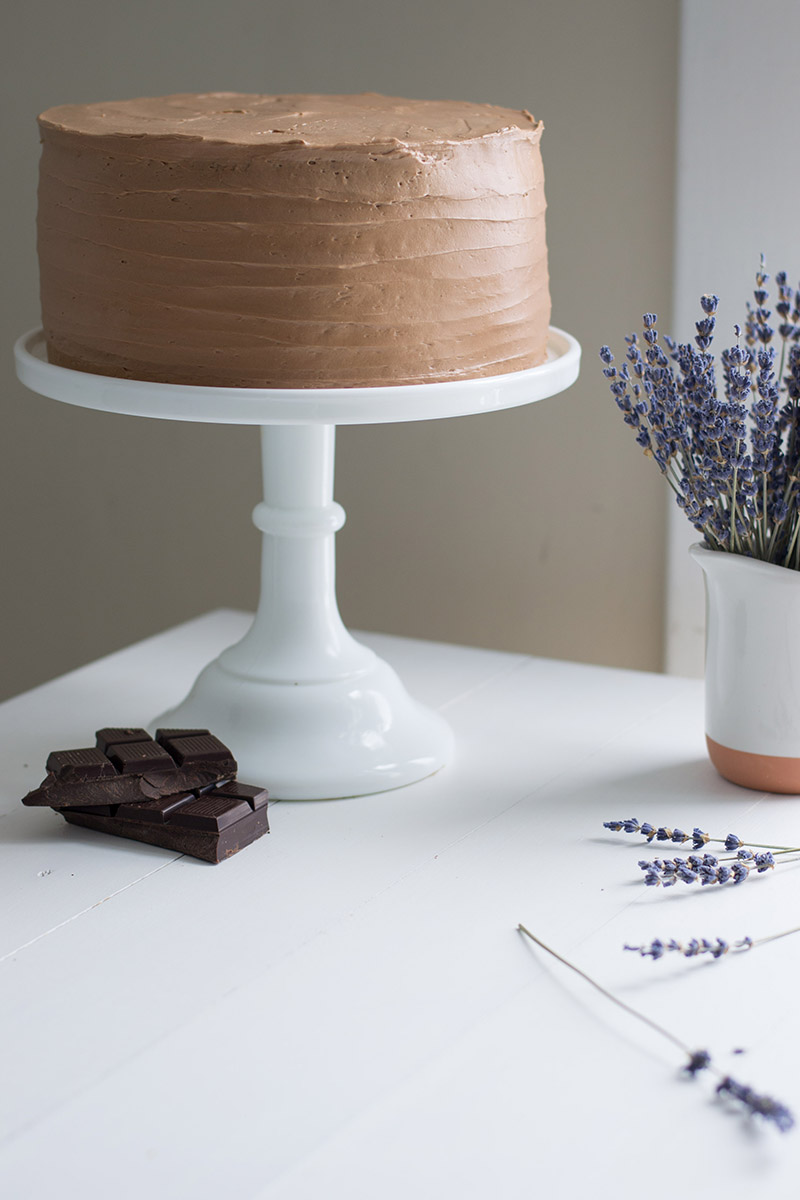
The other curse of end-of-December babies is the fact that our birthdays get lost in the shuffle of the holidays. Earlier this month, Dani lamented on Facebook that she had forgotten to get herself a birthday cake, and I pretty much begged her to let me make her one. I didn’t have to twist her arm too much, and she said a flower or tea flavored cake would be, as her daughter puts it, “the bomb dot com.” (Her daughter is my favorite person on the planet Earth, BTW.)
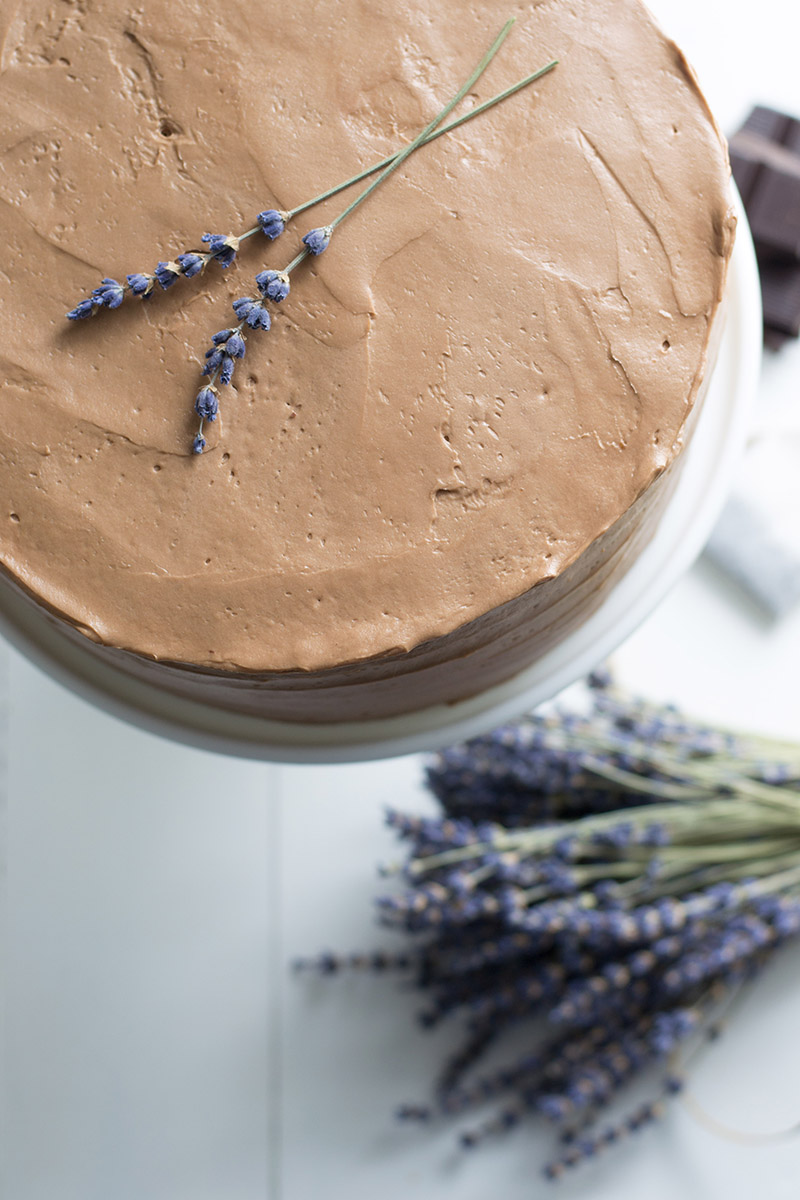
I had been planning on making an Earl Grey Bundt cake anyway, but it’s a birthday cake, so we agreed that I would do a layer cake instead. I suggested lavender frosting and out of nowhere she’s like “and chocolate!” With that flavor profile I had a lot of options. Which flavors should go in the cake and which in the frosting? Would the chocolate overpower the more delicate flavors of the lavender and tea?
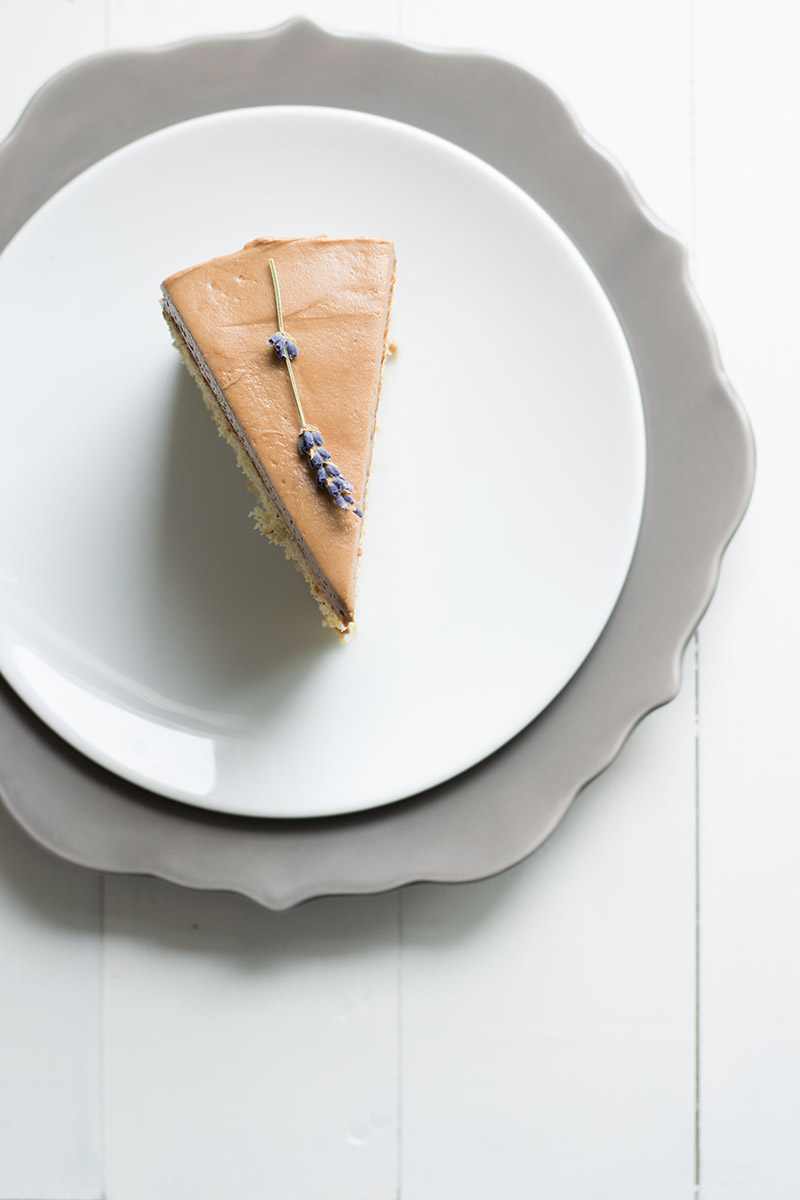
I decided on a German Buttercream because I could steep dried lavender in milk to flavor the frosting. I also pondered a whipped ganache frosting, but I felt that the lavender would get lost in all that chocolate. So the final frosting only has a couple ounces of chocolate, which I think was the perfect balance.
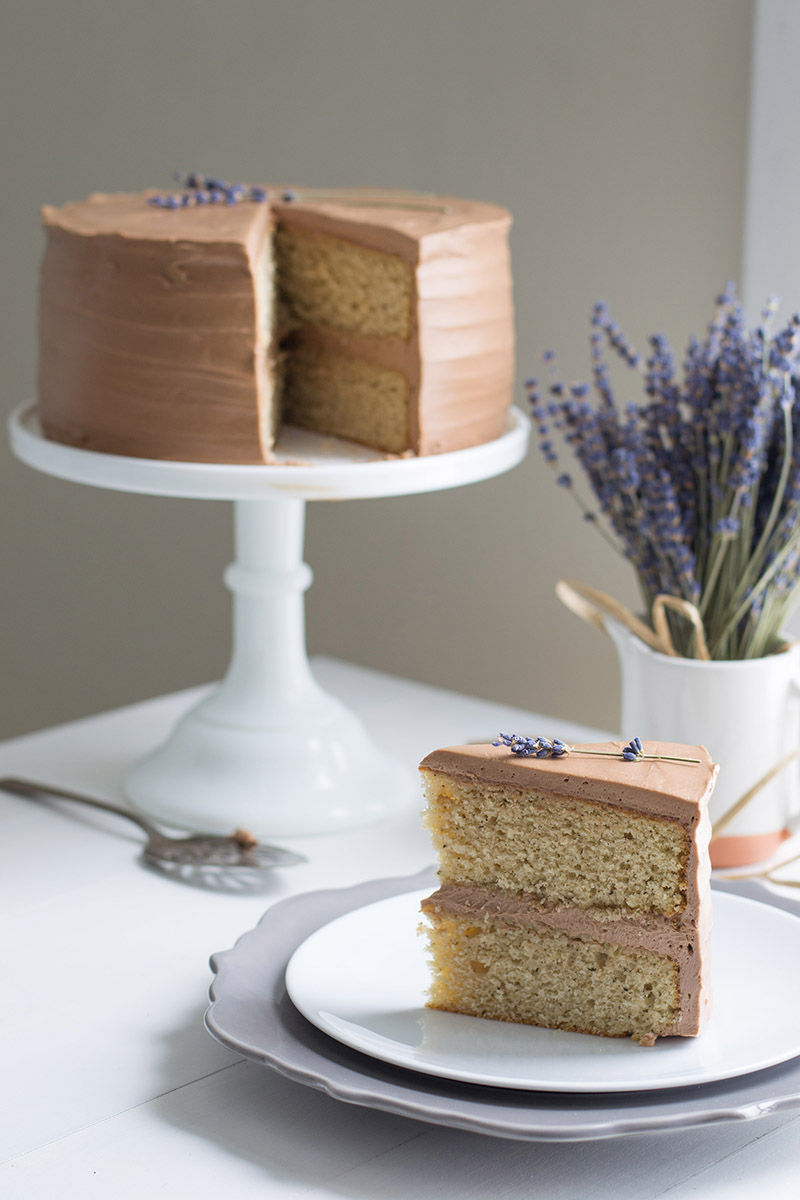
For the cake layers, I went with another milk infusion, steeping bags of tea in milk before mixing the tea-milk into the cake batter. Because I wanted the cake to be speckled, I also added some ground tea leaves to the batter. If you have it, you can add a small amount of Bergamot extract to the batter, but the Earl Grey flavor is strong enough that it isn’t really necessary.
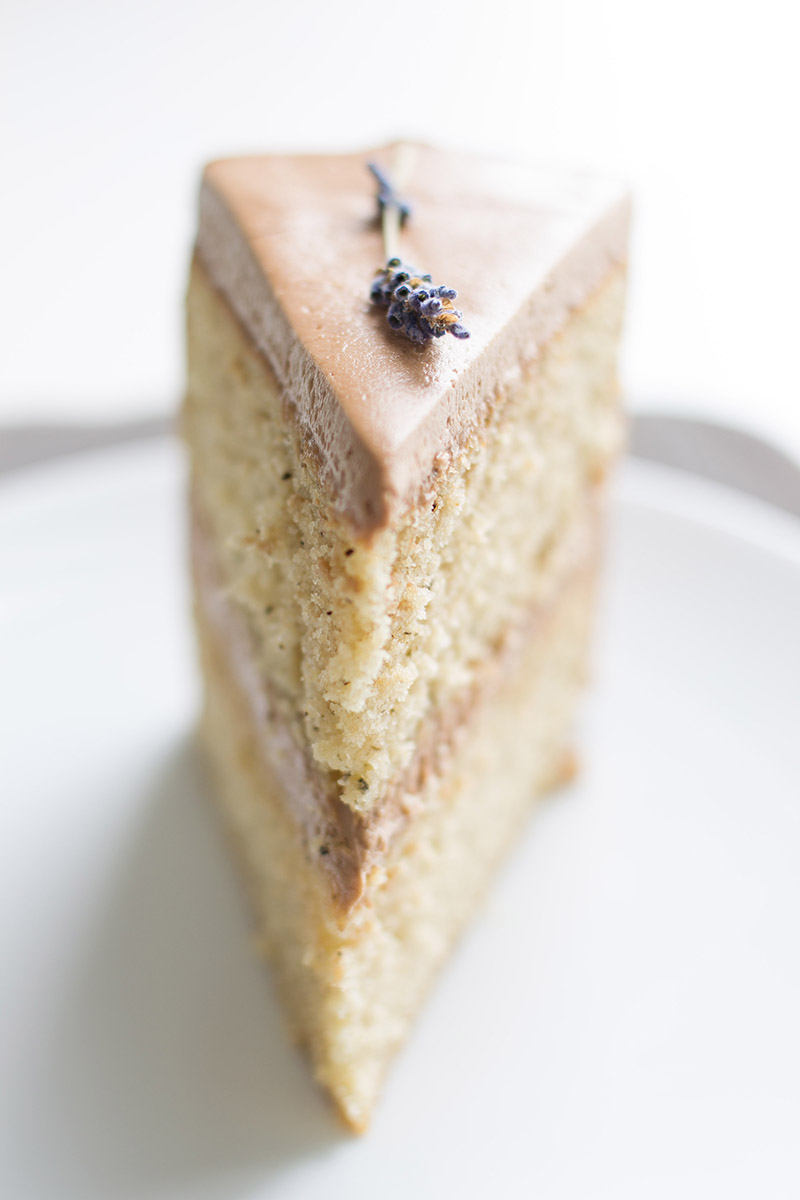
Dani finally got her cake last night, just 2 months late! She agreed to share with some of our friends, who were over watching the Oscars at my house. She happily walked away with the remainder of the cake — more than half of a cake, because I was pretty stingy with everyone else’s slices. Out of respect. (And also because I’m a little bit afraid of Dani.) I’ve already promised that all my friends are getting birthday treats this year. But I make no promises about timeliness.
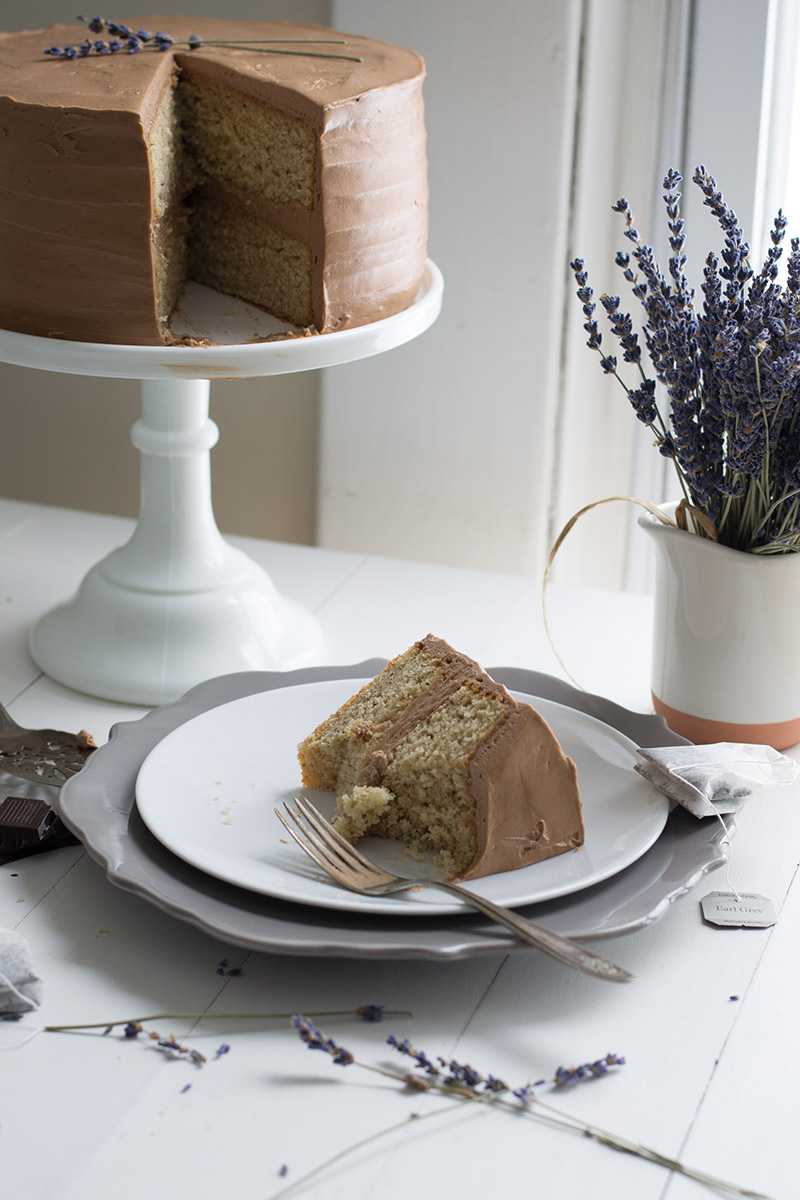
EARL GREY CAKE WITH CHOCOLATE LAVENDER FROSTING
- 1 cup (240 mL) whole milk
- 1 vanilla bean
- 4 bags Earl Grey tea
- 3 cups (360 grams) all-purpose flour
- 2½ teaspoons baking powder
- 1 teaspoon finely ground Earl Grey tea leaves
- ½ teaspoon salt
- 1 cup (225 grams) unsalted butter, at room temperature
- 2 cups (400 grams) granulated sugar
- 4 large eggs, at room temperature
- ¼ teaspoon Bergamot extract (optional)
- 1 cup (240 mL) whole milk
- 1 tablespoon dried culinary lavender
- ¾ cup (150 grams) granulated sugar
- 2 tablespoon (15 grams) cornstarch
- 1 egg
- 1 egg yolk
- 2 cups (450 grams) unsalted butter, sliced, at room temperature
- pinch of kosher salt
- 2 ounces (60 grams) dark chocolate, finely chopped
- Add milk to a small saucepan. Split the vanilla beans, scrape the seeds into the milk, and add the scraped pod to the saucepan, as well. Bring the milk to a simmer over medium low heat. Remove pan from heat and add tea bags. Cover the pan and let steep for 20 minutes. Remove tea bags, squeezing them to get as much liquid back into the milk. Remove vanilla bean pod. Pour milk into a measuring cup and make sure you still have 1 cup of milk. If the liquid has reduced, add a bit more milk so you have a full cup. Let the tea milk cool to room temperature.
- Preheat oven to 350°F. Brush Cake Magic onto the bottoms and sides of two 8-inch cake pans. (Alternately, grease and flour the cake pans.)
- In a large bowl, whisk together flour, baking powder, ground tea leaves, and salt, then set aside. In the bowl of a stand mixer, cream the butter and sugar until light and fluffy, 5-6 minutes. Add the eggs, one at a time, mixing until fully incorporated after each addition, scraping down the sides and bottom of the bowl as needed. If using, add the Bergamot extract.
- Pour in the flour mixture in three additions, alternating with the tea milk, starting and ending with the flour mixture. Mix until the final bit of flour is just combined.
- Divide the batter evenly between the prepared cake pans. Bake for 40-45 minutes, until a cake tester or toothpick inserted in the center of the cake comes out clean. Cool cake layers in their pans on a wire rack for 15 minutes, then carefully turn the cake layers out to cool completely directly on the wire racks.
- In a large saucepan, bring the milk to a simmer over medium heat. Add the lavender, cover, and remove from heat. Let steep for 20 minutes. Strain out the lavender. Return the milk to a simmer over low heat.
- In a large bowl, whisk together sugar, cornstarch, egg and yolk. Slowly pour about half of the milk into the egg mixture to loosen it up, whisking constantly with your free hand. Pour the egg mixture back into the saucepan with the remaining milk, whisking constantly, until combined.
- Turn burner up to medium heat and whisk until the mixture thickens and bubbles start blipping up to the surface. Cook for another minute, timing accurately. The mixture will get quite thick. Transfer the custard to a large mixing bowl (preferably the bowl of your stand mixer if you have one, because you’ll be whipping it up in there later). Press plastic wrap against the surface of the custard and chill in the refrigerator until room temperature, about 2 hours. (You can also chill it overnight; it’s okay if it gets cold.)
- Place the bowl of cooled custard onto your stand mixer fitted with the whisk attachment. Whip on medium high speed until smooth and creamy. Begin adding butter, a few slices at a time. Add the salt and continue to whip until all the butter has been incorporated. Switch the paddle attachment and beat for a few more minutes, until the frosting is silky.
- Place chocolate in a microwave safe bowl and microwave in 10-20 second intervals, stirring after each, until the chocolate is all melted. Pour the melted chocolate into the frosting and beat until combined and uniform, scraping down the side of the bowl a few times to make sure everything is incorporated. Use the frosting immediately or refrigerate until ready to use. (After refrigeration, the frosting will need to come to room temperature and be whipped again for several minutes until it gets smooth.)
- If necessary, level your cake layers with a serrated knife. Place one cake layer on a cake circle or plate. Add about a cup of frosting to the top of the cake layer and spread evenly over the surface with an offset spatula. Place the second cake layer on top, wiggling it around so the top is level. Work the remaining frosting over the top and down the sides of the cake with your offset spatula.
- To get the lines like I have on my cake, place your offset spatula on the frosting at a slight angle, apply light pressure, and spin the cake on a cake turntable, working the offset spatula in an upward spiral until you reach the top.
- Garnish with fresh or dried lavender, if desired
- Buttercream recipe adapted from BraveTart


